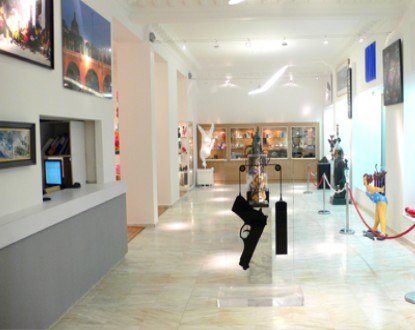Forty years ago, in 1973, the Ferrero Gallery, then known as Studio Ferrero, organized a major exhibition featuring twenty-seven young artists under the banner “Ecole de Nice”. More than one hundred and fifty works offered the public a broad panorama of the artistic creation in Nice at the beginning of the 1970s. All the trends of this movement were represented (Fluxus, New Realists, Supports/Surfaces, Groupe 70) as well as unclassifiable individuals.
If the Ecole de Nice is a concept with variable geometry, without clearly defined geographic, chronological, and artistic limits, it seemed interesting to us to explore the relevance of this movement in 2013. What has become of the artists still active forty years later? While some artists now refuse to be associated with it for personal reasons (notably Martial Raysse who left the region), most gladly claim their association with this movement, either primarily or secondarily.
The Ecole de Nice in 2013 is the result of an aggregation of personal artistic journeys that have led its actors into sometimes very different spheres. This diversity constitutes the strength of the Ecole de Nice, enabling it to occupy a very broad and varied artistic space.
The longevity of the Ecole de Nice can also be explained by the dynamism and creativity of its members, which allow them to remain significant in the current art scene, despite increased competition in the art market, with the arrival of younger generations and especially a globalized and internationalized offer.
By its uniqueness, the Ecole de Nice in 2013 intrigues the art world as much, if not more, than it did in 1973.
Exhibited artists: Marcel Alocco, Ben Vautier, Chacallis, Max Charvolin, Jean Ferrero, Vivien Isnard, Jean Mas, Claude Gilli, Serge Maccaferri, Martin Miguel, Pierre Pinoncelli, Guy Rottier, Sacha Sosno, Bernar Venet.


